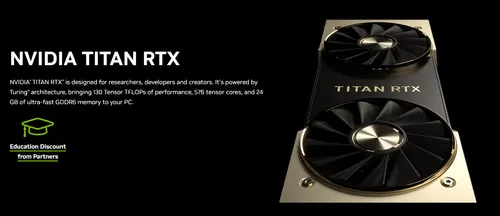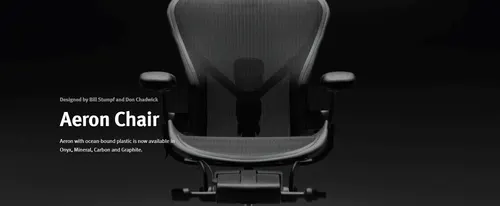Our partner, XM, lets you access a free demo account to apply your knowledge.
No hidden costs, no tricks.

Day-trading can be a highly demanding career - both emotionally and financially. You may have seen countless real-life and fictional examples of traders sitting at desks filled with monitors, each displaying some important dataset or index. This part is usually quite accurate.
Day-traders need to keep track of a large amount of data in order to make split-second decisions and make quick profits on the market, which is easier said than done.
However, having adequate hardware and software at your disposal can go a long way in making your day-trading career less stressful and give you that all-important sense of control over your actions on the market.
While day-trading may not be the single most technically demanding job hardware-wise, it still requires above-average hardware to keep the operation running smoothly.
With hours spent in front of a computer, many things can go wrong and hardware can malfunction, which can make you lose precious time and lead to failed trades, or worse, positions that you cannot access anymore due to technical difficulties.
The importance of reliable hardware is paramount to any trading activity - especially in day-trading.
While day-trading allows for a degree of flexibility not seen in most other professions, some pieces of hardware are essential for any day-trader.
If we overlook the most basic necessities, such as a functioning computer and a proper internet connection, there are still some pieces of hardware that can be game changers in the quality of your day-trading experience.

Processing power is the name of the game in day-trading and allows for a seamless use of multiple monitors running complex pieces of software.
Having a powerful multi-core CPU, as well as ample RAM can go a long way to help you make the most of advanced charting software.
It is preferable to choose a GPU with at least 16 GB of RAM.
Execution and processing speed is essential to successful day-trading, as most strategies run on very tight timeframes and delays due to lag and a slow CPU are far from ideal.
Another key function served by an adequate CPU is multitasking - day traders often need to run multiple applications simultaneously, such as trading platforms, charting tools, news feeds, and communication apps. A strong CPU ensures smooth multitasking without performance slowdowns.

Storage is another basic component required for day-trading. Professionals may download and export vast amounts of data, including their trade journals, stock screeners, financial statements, etc. While typically not of a very large size, these files can quickly add up to the various pieces of software needed for day-traders, which is why it is important to have plenty of storage room on your computer when trading to avoid any unnecessary complications.
It is also advisable to use SSDs (Solid State Drives) for quick boot times, fast data access, and smooth application loading.
When you need to access historical market data, having a fast storage solution reduces the time it takes to retrieve this information. Quick data access is particularly important when reviewing historical price patterns or analyzing past trades.
If you trade with high-frequency strategies that generate considerable amounts of data, you might need a larger storage capacity.
On average, an SSD between 250 GB to 500 GB is typically enough for most traders. Anything above this depends on your trading strategy and data intensity.

Having high quality monitors is key when you are day-trading. A high fidelity display can help you clearly visualize the vast amounts of data you will be dealing with.
Resolution is also a key factor to consider.
A Full HD (1920X1080) or Quad HD (2560X1440) resolution is perfect for traders. Also, many day traders use multiple screens, therefore, connectivity is also a major factor.
More things to consider include the bezel and panel sizes of the monitors, as well as refresh rate and response time, to ensure that the display is constantly able to clearly show the visuals that you are trying to keep track of, while being easy to stack as a full trading display, which may consist of over 6 or 8 monitors, depending on the trader.
It goes without saying that your budget need not be stretched too thin to buy the latest and highest fidelity monitors, which you may not need, such as a 4K monitor.

Having proper cable management can save you a lot of headache, especially when you are dealing with multiple screens at once. The cables and cords can easily mix with each other, causing them to collect dust more easily and get in the way when you’re trying to move around in a tight space.
Using cable clips or raceways can help you organize your cables, while protecting them from gathering dust or being damaged externally. Bad cable management can lead to malfunctioning cables that will require a long period of searching for the cable that is not working, all the while trying to physically locate the problematic cable in a pile of others, which can be an annoying experience.
Proper ventilation is essential to you and your hardware. Decent cooling inside your PC, as well as unobstructed ventilation of your room can help maintain temperatures at optimal levels - preventing your hardware from overheating. Working in a hot environment can also cause you to build up stress more easily.
It would be ideal if you were trading in an air-conditioned room. If not, regularly ventilating your room can save you a lot of headaches in the future and will keep your hardware safe from heat-related malfunction.
Regularly backing up your data can be a lifeline during especially stressful times. Knowing that your data is safe can help you relax and not become too stressed if an unexpected power outage occurs.
Here are a few tips regarding data backup for day-traders:

A backup power supply can protect your data, as well as the rest of your hardware, from sudden power outages. Outages can damage your hardware, which is an expense that can be easily avoided using a backup power supply.
Using an uninterruptible power supply (UPS) can help you prevent data loss, maintain trading operations, prevent system crashes, and protect your hardware.
Many day traders rely on a stable internet connection for real-time data feeds and trade execution. A UPS can keep your modem and router powered, ensuring uninterrupted internet connectivity.

Ergonomic accessories can help reduce the physical stress that builds up when sitting at a computer desk for hours. Wrist and hand rests, adjustable monitor stands, etc. are great at keeping you comfortable.
Screen breaks are also essential from time to time, so make sure to take a brief walk and keep yourself hydrated in between trades.
A great day-trading setup is characterized by comfort and efficiency. Keeping your hardware secure and up to date is essential for proper trading, while ergonomics can help reduce stress and keep you comfortable for hours at a time.
It must be noted that day-trading is not as technically demanding as some might think. While many professional day-traders have monitor arrays and very powerful PCs, this is not an essential part and will not substitute a functioning trading strategy.
There are many budget-friendly setups out there that can help you cut costs without sacrificing efficiency.
Our partner, XM, lets you access a free demo account to apply your knowledge.
No hidden costs, no tricks.
The ebay day-trading computer setup requires a powerful CPU and GPU and a combination of quality of life features, such as ergonomic hardware and proper cable management.
While there is no single best setup, adequate hardware can be the difference maker in terms of response time, which is essential for day-traders.
While having a powerful custom trading PC can be a great advantage, it is not an absolute necessity for most day-traders. Competent hardware that can handle large amounts of data, as well as ergonomics, are all that is needed for a comfortable trading environment.
Depending on the number of different data sources you are using, you may need as few as two, or as many as eight monitors while day-trading. Some day-traders only use a single monitor, while others prefer an array of monitors to quickly sort through piles of data.